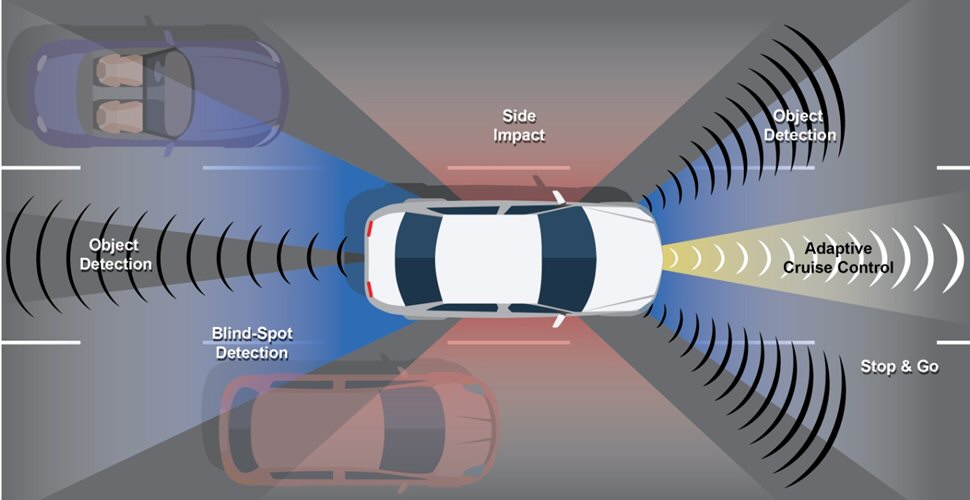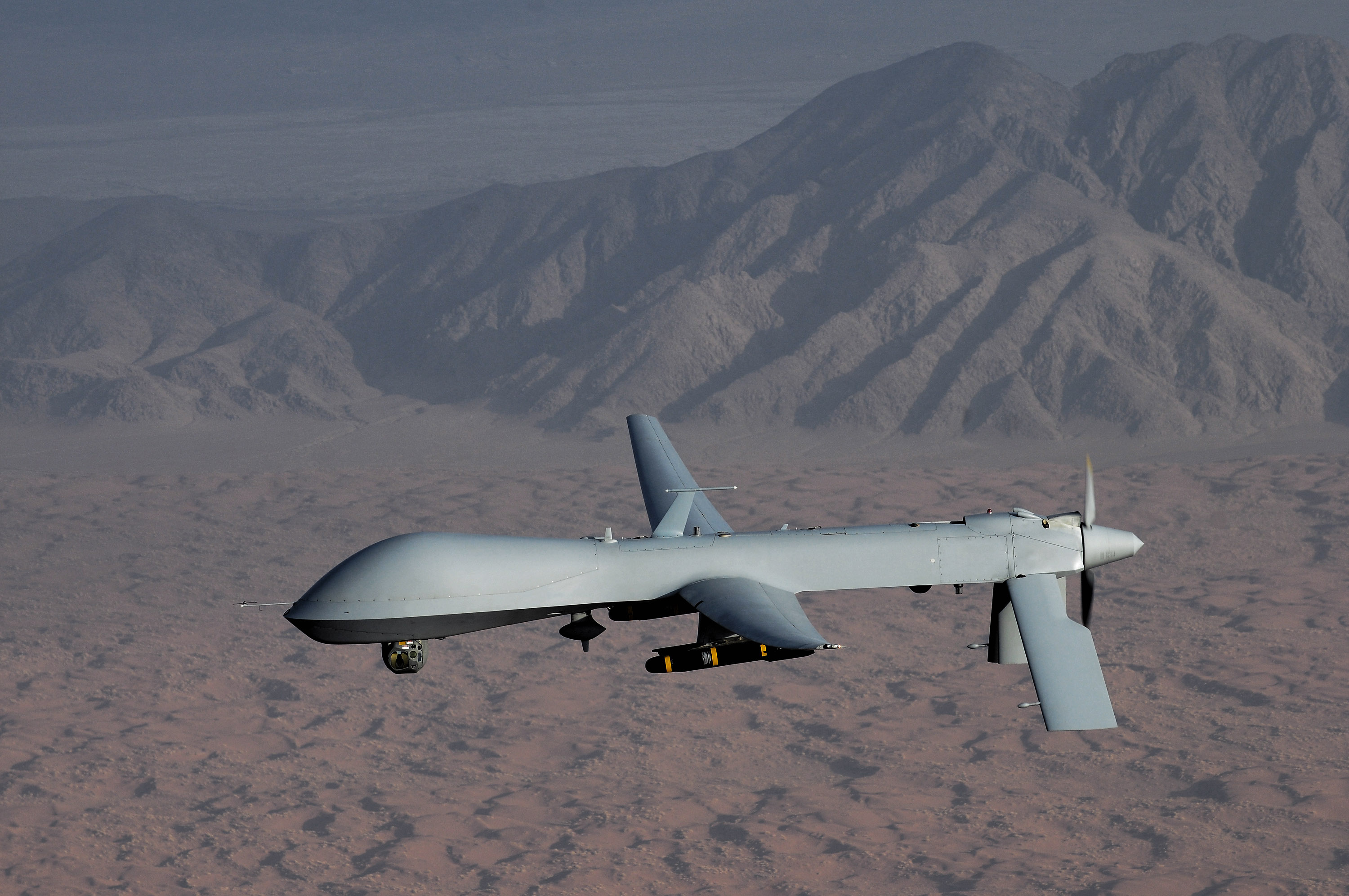Editor's Note: A companion article discussing radar technology advancements and new applications was published in the March 2017 issue of Microwave Journal.
Recent breakthroughs in radar technology combined with the demand for compact, affordable and high precision radar for military and commercial applications has led to a renaissance in the methods and use of radar. Many upcoming areas of growth, such as autonomous surface vehicles and unmanned aerial vehicles (UAV), rely upon solid-state radar and new methods of fabrication and programming. This resurgence is a byproduct of rapid advancements in stealth, radar and jamming technology for defense, which is driving current radar and stealth solutions into obsolescence.1 A wide accessibility of sophisticated digital signal processing (DSP), agile RF transceivers and cutting-edge antenna techniques is enabling this change. The next few years will see a proliferation of radar technology on the roads, on the sea and in the skies that can penetrate the noise and RF clutter in an increasingly wireless world.
Even prior to the relatively recent buzz over the GaN contribution to military radar technology, solid-state radar systems and electronic array antennas already eclipsed and surpassed vacuum tube based radar for many applications that could not tolerate the associated maintenance burden.2-5 Over time the employment of lower power and higher resolution solid-state radar, often leveraging GaAs semiconductors, has trickled down from military to industrial/scientific and now into the commercial markets. The same sensing technologies used by the military for range and velocity measurements, hazard detection and object identification are being adapted for use in industrial facilities and work sites, as well as the world's highways and skyways.
Technology developments resulting in reduce the size, weight and power and cost (SWAP-C) has led to a worldwide proliferation of sophisticated radars for commercial and military applications. It is predicted that the radar sensor market will experience a global compound annual growth rate of 6.94 percent across with the aerospace, defense and automotive industries in the Asia-Pacific (APAC) region dominating radar sensor demand.6 Increasing territorial contention and geopolitical instabilities in this region along with the production of passenger cars with radar sensor technology produced in APAC are the major drivers.
AUTONOMOUS AND DRIVERLESS VEHICLES
Most of us are aware of the widespread debate about passenger car safety and the proposed use of autonomous/driverless vehicles. With companies such as Google, Apple and Tesla pioneering and promoting driverless vehicle technology development and adoption, there is little doubt why some companies, such as Lyft and Uber, are planning to deploying fleets of autonomous cars to increase the safety and efficiency of urban travel for the world's cities that are undergoing continuous growth and densification. Not surprisingly, autonomous cars and new car safety features currently in use depend upon advanced and affordable solid-state radar technologies (see Figure 1).

As demonstrated by Tesla CEO, Elon Musk, in an address to the public after a tragic driverless car accident, radar technology is being viewed as an enhancement to laser radar (LIDAR) and visual spectrum camera technologies for providing range, speed and hazard detection in inclement weather and dynamic environments.7 New automobile safety features are enabled by radar, for example, Panasonic's millimeter-wave radar uses 79 GHz radar provides very high resolution and weather resistant sensing.8 A key performance feature of millimeter-wave radar is the ability to differentiate objects that are very close together and have varying material compositions. In practical use, this can equate to hazard and debris detection in dense traffic scenarios, or differentiating a bicyclist’s range, velocity and direction of travel when partially obscured by an automobile or urban features.
Industrial interests in reducing fuel costs, safety, operational costs and liability in long-haul cargo and transportation vehicles has led to several autonomous/driverless semi-trailers that range from completely autonomous to several automated semi-trailers following a human-driven lead vehicle. These systems use radar sensing for range, velocity, debris/hazard detection, along with sensor fusion with sonar, visual spectrum cameras and coordinated data-links between vehicles.
UNMANNED AERIAL SYSTEMS AND UNMANNED NAVAL SYSTEMS
Following similar trends, the aerial vehicle industry has experienced its own renaissance in what is commonly referred to as drone technology.9, 10 The past several years have led to unmanned aerial system (UAS) usage from precision military operations (see Figure 2) to commercial entertainment, scientific and consumer use. Though high precision solid-state radar is still relegated to military combat UAS, the increasing awareness of vulnerabilities in utilities and military installations to small-profile UAS, has led to a demand for much greater precision radar technologies that can detect, track and even disable potential UAS threats.11, 12

The required resolution may be achieved by adapting older radar technology with recent DSP upgrades for better clutter-sized object detection, tracking and signature analysis. New small high resolution radars are being developed for use on, as well as to detect, UAS that can be transported in standard vehicles and easily deployed, or can be carried by counter-UAS airborne systems. Smaller and more easily upgraded processor technologies and field-programmable gate arrays (FPGA) built on modular platforms are needed to meet the growing demand for these new and upgraded systems.
Other related development is in unmanned naval systems (UNS) for industrial and military applications, as well as solid-state radar used in autonomous marine commercial transportation systems.13 The cost and effectiveness of radar in marine environments has increased dramatically.14 The most recent marine radar technology uses far less power, has a warm up time that is instantaneous compared to TWT-based radars, has DSP technology capable of deciphering clutter more efficiently and employs electronic beam-forming,
The cost and capability of computing, control and radar technology has improved so much so that there is a new concern for low cost and disposable swarm robot UAS and UNS being a significant threat to even large and expensive military ships, aircraft and installations.
SCIENTIFIC AND INDUSTRIAL MEASUREMENTS AND MAPPING
Through advanced DSP and computational processing methods, cluttered radar signatures are being enhanced to produce useful scientific observations and studies — and are even being used in industrial applications to provide surveillance grade intelligence.15 For example, older high frequency (HF) radar systems, operating at 42 MHz, have been adapted to measure ocean currents and patterns in real-time. Further studies have led to the development of tsunami detection algorithms using HF radar.16
Another research group has developed an avalanche and lava flow imaging system using recently developed multiple-input multiple-output (MIMO) phased array antennas and frequency modulated continuous wave techniques.17 These techniques enable relatively low cost enhancements that produce greater range and sensitivity compared to prior technologies, to the point that 3D mapping of avalanche and lava flow dynamics with one meter resolution is possible.
COMPLEX AND INTELLIGENT RADAR WAVEFORMS AND SYSTEMS
Advances in waveform generation and signal processing algorithms/techniques have met many of the anticipated requirements of next generation performance where component and device level technology is lacking. Though recent radar technologies have much lower probability of intercept and a low probability of detection (LPI/LPD), further enhancements can be made with clever and adaptable waveform generation and even future cognitive systems.18-21
Soldiers and military intelligence systems will also need to operate uncontested in highly congested electromagnetic (EM) environments. Radar systems that can adapt their transmission/reception (TRx) to avoid detection or maintain high performance with an abundance of interferers and noise will also be required for the battlefield of the future.
Recent methods of disguising radar signals such as real-time, re-programmable waveform synthesis, has led to a new generation of radar which doesn’t rely on a preprogrammed waveform. These radar can adapt to the signal environment to avoid detection, jamming and identification. Furthering, the U.S. Army Command’s Communications-Electronics Research Development and Engineering Center (CERDEC), has developed a method of implementing LPI/LPD radar that uses tunable, noise-encrypted radar waveforms. The Advanced Pulse Compression Noise (APCN) technology, enables a radar transmitter to send non-repeating and noise-like radar waveforms that can appear innocuous to radar detectors and jammer systems.
Further advancements of this technology will lead to intelligent radar systems that instantly adapt to the EM environment with the most effective waveforms and techniques and that coordinate with allied radar and radio systems for enhanced battlefield effectiveness. Such systems are called cognitive radar and cognitive radio, enabled by the adoption of software-defined radio (SDR) systems now being employed in many major radar and radio applications.
References
- K. Mizokami, “China Claims It Developed “Quantum” Radar To See Stealth Planes,” Popular Mechanics, September 2016, Web. http://www.popularmechanics.com/military/research/a22996/china-quantum-stealth-radar/, Retrieved September 28, 2016.
- D. Kelly, “Underground Radar Technology Aids Hurricane Katrina Recovery,” Environmental Monitor, August 2016, Web. http://www.fondriest.com/news/underground-radar-technology-aids-hurricane-katrina-recovery.htm, Retrieved September 28, 2016.
- D. Hambling, “Raytheon’s New Radar Tech Could Realize the Pentagon’s Pain Ray,” Popular Mechanics, April 2016, Web. http://www.popularmechanics.com/military/research/a20264/raytheons-gallium-nitride/, Retrieved September 28, 2016.
- J. McHale, “Funding for Radar, Electronic Warfare, C4ISR, Steady in DoD FY 2017 Budget Request,” Military Embedded Systems, March 2016, Web. http://mil-embedded.com/4894-funding-for-radar-electronic-warfare-c4isr-steady-in-dod-fy-2017-budget-request/, Retrieved September 28, 2016.
- S. Behan, “Solid-State Technology Suitable for Radar Applications,” Military Embedded Systems, February 2016, Web. http://mil-embedded.com/articles/solid-state-technology-suitable-radar-applications/, Retrieved September 28, 2016.
- “Radar Sensor Market by Type, Technology, Component, Band, Range, Application, Vertical, and Geography – Global Forecast to 2022,” MarketsandMarkets, June 2016, Web. https://www.reportbuyer.com/product/3893219/radar-sensor-market-by-type-technology-component-band-range-application-vertical-and-geography-global-forecast-to-2022.html, Retrieved September 28, 2016.
- “Tesla Driverless System to Use Updated Radar Technology, ET Auto, September 2016, Web. http://auto.economictimes.indiatimes.com/news/auto-technology/tesla-driverless-system-to-use-updated-radar-technology/54286423, Retrieved January 24, 2017.
- “Millimeter-wave Radar Technology: Protects the Safety of Intersections with a Broader Field-of-view and in Greater Detail,” Panasonic, Web. http://www.panasonic.com/global/corporate/technology-design/technology/radar.html, Retrieved September 28, 2016.
- M. Iriarte, “U.S Army Completes UAS Radar-Based Sense & Avoid System Test,” Military Embedded Systems, Web. http://mil-embedded.com/news/u-s-army-completes-uas-radar-based-sense-avoid-system-test/, Retrieved September 28, 2016.
- “US Navy Tests Counter-UAS Capabilities Aboard Warships,” Unmanned Systems Technology, September 2016, Web. http://www.unmannedsystemstechnology.com/2016/09/us-navy-tests-counter-uas-capabilities-aboard-warships/, Retrieved September 28, 2016.
- “Detection of Small Drones with Millimeter Wave Radar,” Fraunhofer FHR, Web. http://www.fhr.fraunhofer.de/en/businessunits/security/Detection-of-small-drones-with-millimeter-wave-radar.html, Retrieved September 28, 2016.
- “Passed the Test: Q-53 Radar Demonstrates Counter-UAS Capability,” Lockheed Martin, June 2016, Web. http://www.lockheedmartin.com/us/news/press-releases/2016/june/160627-mst-passed-the-test-q-53-radar-demonstrates-counter-uas-capability.html, Retrieved September 28, 2016.
- R. Wall, “Ship Operators Explore Autonomous Sailing,” Wall Street Journal, August, 2016, Web. http://www.wsj.com/articles/ship-operators-explore-autonomous-sailing-1472635800, Retrieved September 28, 2016.
- B. T. Burden, “A New Wave of Marine Radar,” West Marine, Web. http://www.westmarine.com/WestAdvisor/New-Radar-Technology, Retrieved September 28, 2016.
- “TTU Advanced Doppler Radar,” Sandia National Laboratories, Web. http://energy.sandia.gov/energy/renewable-energy/wind-power/wind_plant_opt/ttu-advanced-doppler-radar/, Retrieved September 28, 2016.
- B. Milonic, “CODAR SeaSondes See Japan Tsunami on Two Continents,” CODAR Ocean Sensors, May 2011, Web. http://www.codar.com/intro_Japan_tsunami_detected_on_2_continents.shtml, Retrieved September 28, 2016,
- “New Radar System Could Lead to Better Defences Against Avalanches,” Phys.org, September 2016, Web. http://phys.org/news/2016-09-radar-defences-avalanches.html, Retrieved September 28, 2016.
- A. Barrow, “Army Developing More Adaptable, Secure Radar Technology,” CERDEC Public Affairs, March 2016, Web. https://www.army.mil/article/164251/Army_developing_more_adaptable__secure_radar___, Retrieved September 28, 2016.
- H. J. Shin, R. M. Narayanan, M. A. Asmuth and M. Rangaswamy, “Ultrawideband Noise Radar Tomography: Principles, Simulation, and Experimental Validation,” International Journal of Microwave Science and Technology, Vol. 2016, No. 5787895, March 2016, Web. https://www.hindawi.com/journals/ijmst/2016/5787895/, Retrieved September 28, 2016.
- A. Hassanien, M. G. Amin, Y. D. Zhang and F. Ahmad, “Dual-Function Radar-Communications: Information Embedding Using Sidelobe Control and Waveform Diversity,” IEEE Transactions on Signal Processing, Vol. 64, No. 8, January 2015, pp. 2168-2181.
- “Lockheed Martin Introduces Next-Generation Radar Technology,” Lockheed Martin, November 2015, Web. http://www.lockheedmartin.com/us/news/press-releases/2015/november/151117-mst-lockheed-martin-introduces-next-generation-radar-technology.html, Retrieved September 28, 2016
